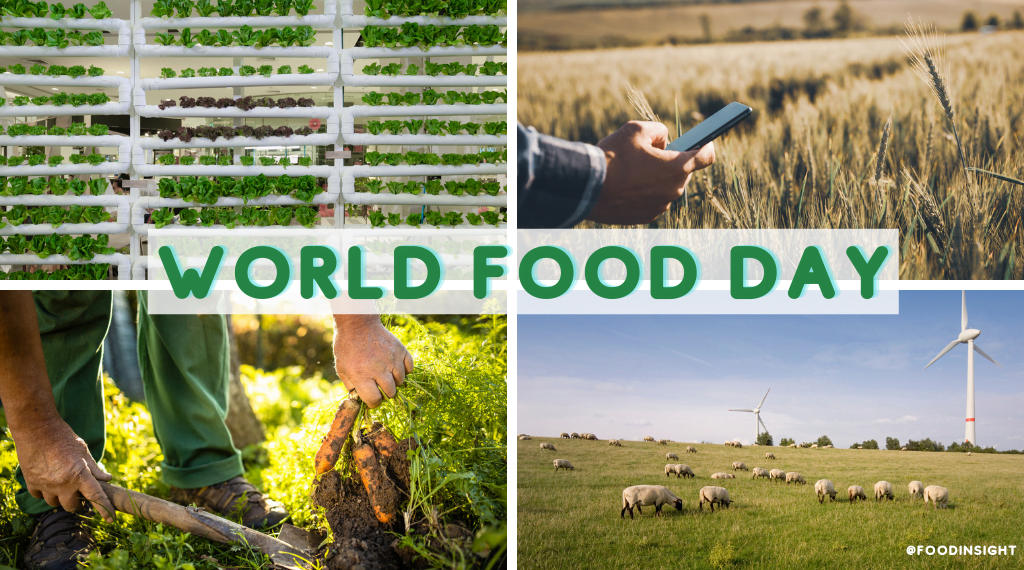It is harvest season in various parts of the world for many different crops. In honor of World Food Day, we are spotlighting the people who work at the center of food production, the farmers. While farming is one of the oldest professions, many advances have made farming more efficient, environmentally friendly and reliable for both the farmers and us. You can think of farming innovation as the “superhero gadgets” that help “save” our food system. Below, we’ll cover four innovations that are utilized by our farming food heroes to help support our food system daily.
Regenerative agriculture
Regenerative ag helps farmers employ land management techniques that ensure natural elements are able to replenish themselves while they are used during food production. Regenerative ag practices are focused on building up high-quality soil, retaining rainwater, improving the water cycle, increasing biodiversity and promoting both human and animal welfare.
A priority action in regenerative ag is focused on carbon management since carbon is a fundamental element that makes up all living things, including our food. Thus, keeping carbon levels at optimum ranges in soil and the atmosphere are essential. Actions such as no-till farming, composting and the planting of perennial crops all help with carbon management.
Precision agriculture
Technology is a “friend” to many of us to help do our jobs more efficiently, and this holds especially true for farmers. Today’s farmers use self-driving tractors, tablets, smartphones, satellite imaging and even drones. These technologies enable farmers to grow more food on their land while reducing their water, fertilizer and pest-control needs. Using these technologies can help increase crop yield but can also save resources and help to produce more food with less energy, time and related inputs.
Some popular new precision ag techniques include the use of specialized sensors. There are sensors that can monitor soil water availability, leaf temperature, insect-disease infestation and soil fertility. Another “old school” precision ag technique is variable-rate seeding (it’s been used since the mid-1990’s). While not new, it remains a highly important tool. This technique allows farmers to match up their seeding rates (seed planting) with field variability (productivity, fertility and water availability of the fields). Variable-rate seeing prevents over seeding or under seeding. Both can result in low yields, which is something no farmer wants.
Animal ag tracking
While there are many advances in crop care, animal care has not been left behind. For instance, there have been many advances in cow management that have helped cattle remain healthy while still producing reliable supplies of milk. Brian Fiscalini, who manages his family’s 100+ year old California dairy farm, gave us some insights that help keep his farm running and cows healthy. Brian noted, “We use individual cow monitoring software that allows us to manage each cow with respect to her needs throughout the year. We have a system that tracks the amount and quality of milk produced each day.”
Advances like these in animal agriculture that monitor the amount of exercise, food consumed and the quality of milk produced for dairy cows, not only promote a reliable dairy supply, but also support good animal welfare practices. A dedication to healthy and well-maintained animals sustains One Health initiatives – healthy animals lead to healthy people and a healthy environment.
Farming from the inside
A “farming disruptor” that has come along and that has given many the opportunity to access more locally produced fruits and vegetables is vertical faming. This method of farming allows for some fresh produce to be grown without the use of soil or natural sunlight, and the produce is often able to grow faster than in a traditional farm setting. A key advantage of vertical farms is that they can occur in an urban area and do not require wide-open land; all you need is specialized building space. While this type of farming cannot be utilized for all crops, many vertical farms are able to grow crops to full maturity in half the number of days of a traditional farming practice, using less water and less fertilizers, and also using zero pesticides, herbicides or fungicides. This translates into savings of energy and resource inputs.
Certainly, in these times, the importance of our food supply, food safety and food accessibility is rightfully heightened. With this, let’s extend our appreciation to the farmers that help get food on grocery store shelves and to local farmers markets. Three cheers for World Food Day!
